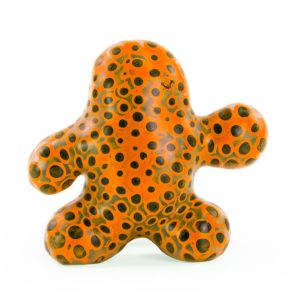If you’re a parent to a neurodiverse child, you’ll understand how challenging it can be for autistic children to manage their behaviour. Even our high-functioning kids can lose control in situations that may seem only mildly challenging to their neurotypical peers.
Some children experience upsets daily. This loss of control and resulting anxiety can make it challenging to participate in activities and, in some cases, to even leave the house.
While it’s not always easy to calm a child with autism, there are techniques you can use to help create a calmer environment in the hopes of keeping upset and distress at bay. Our neurodiverse children can react to physical or emotional stress by expressing excitement, frustration, or anxiety or responding to sensory assaults differently to neurotypical children.
It can be challenging to interpret autistic reactions. In some cases, reactions take the form of significant temper tantrums, but other reactions can look very different.
Some common forms of reactions include:
- Screeching or making other noises
- Running away (bolting)
- Self-stimulation (intense rocking, pacing, self-talk, etc.)
- Self-aggression (head-slapping or banging, pinching, etc.)
- Aggression toward others (in rare cases)
- Sensory avoidance (covering ears, covering eyes, retreating)
- Sensory-seeking behaviour (crashing against furniture, squeezing into small spaces, etc.)
- Refusal to engage
- Compulsive behaviours (repeatedly touching the same objects in the same order)
While some of these behaviours may be attempts to self-calm, others are physical manifestations of their internal upset.
How to create a calm environment

One of the best ways to create a calm environment is to start by encouraging calm behaviour. Promoting a calm demeanor and teaching your child how to manage their feelings is time-consuming and requires consistency, but it can make a big difference.
We recommend the following to help keep your child with autism calm and secure:
- Create a safe space in the garden, the bedroom, or the lounge room. If you notice your child becoming overwhelmed, let them know it’s time to go to the safe space to calm down. Sometimes just knowing there’s an option can reduce anxiety.
- Give your child a selection of sensory fidget toys to help them focus and lower their anxiety.
- Consider purchasing indoor or outdoor swings and climbing equipment. These can be helpful for kids with autism to get the sensory input they need to self-regulate.
- A weighted blanket can help your child feel secure, making it easier for them to cope with daily anxiety-causing stressors (school and community experiences).
- Consider providing a “chew” toy. For some children, being allowed to chew can help them stay calm and regulate their emotions.
- Spend time teaching your child meditation and guided meditation techniques. Not all autistic or neurodiverse children can use these tools, but some experience positive results from mindfulness.
- Encourage your child to be physically active. Exercise can help regulate mood.
- Teach simple methods for staying calm. Include: counting to ten, walking away, deep breathing, meditation, or (when appropriate) tuning in to a calming video or book, depending on your child’s ability.
- Pets can have a calming effect on children with autism and help them manage their feelings.
Why choose Sister Sensory?
We are passionate about providing sensory toys for autistic and neurodiverse children.
Finding the perfect gift for neuro and sensory-diverse people in your life can be challenging, which is why we’ve created a unique gift registry feature for our sensory solutions online shop here in Australia.
Shop our Gift Registry today.








